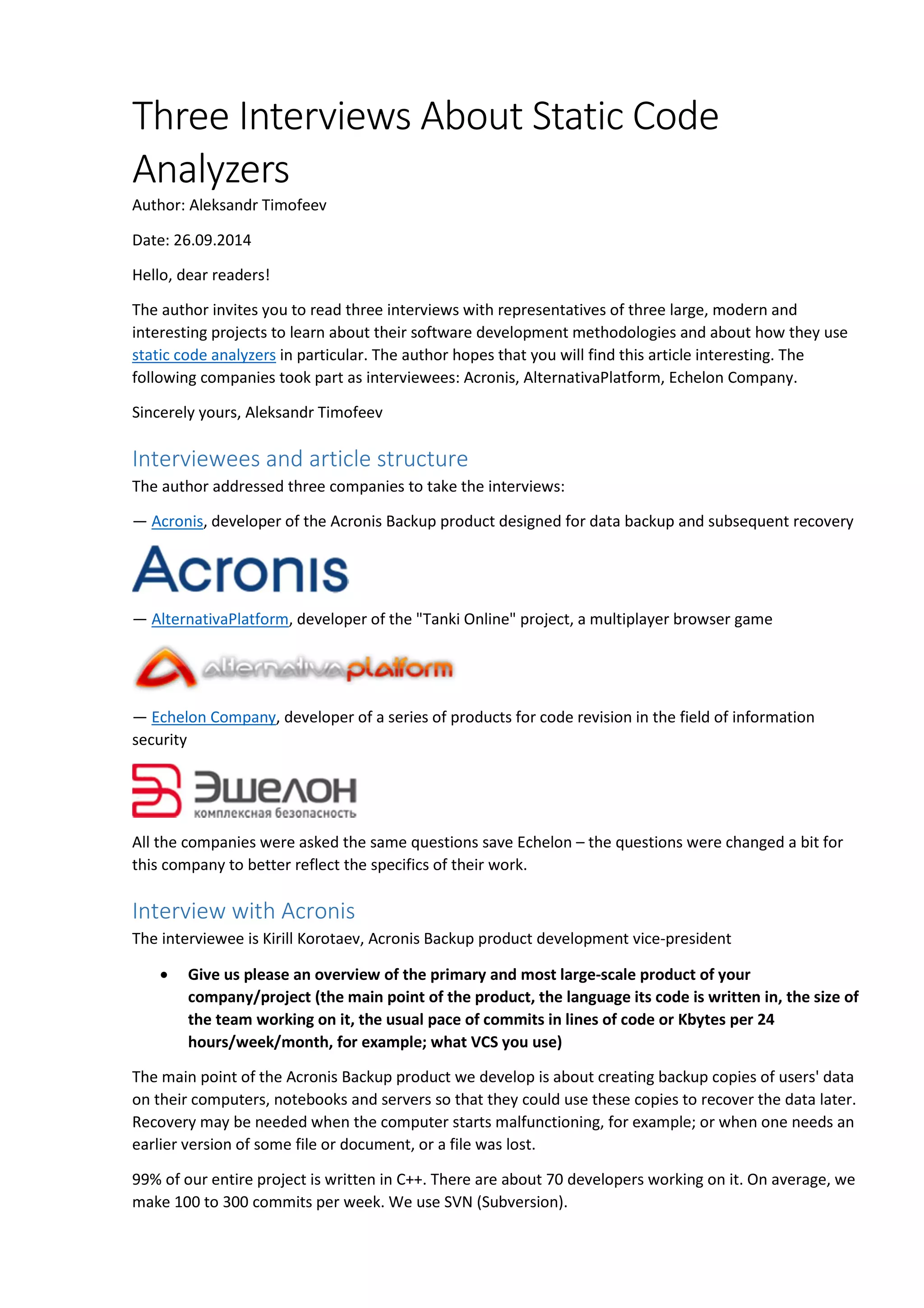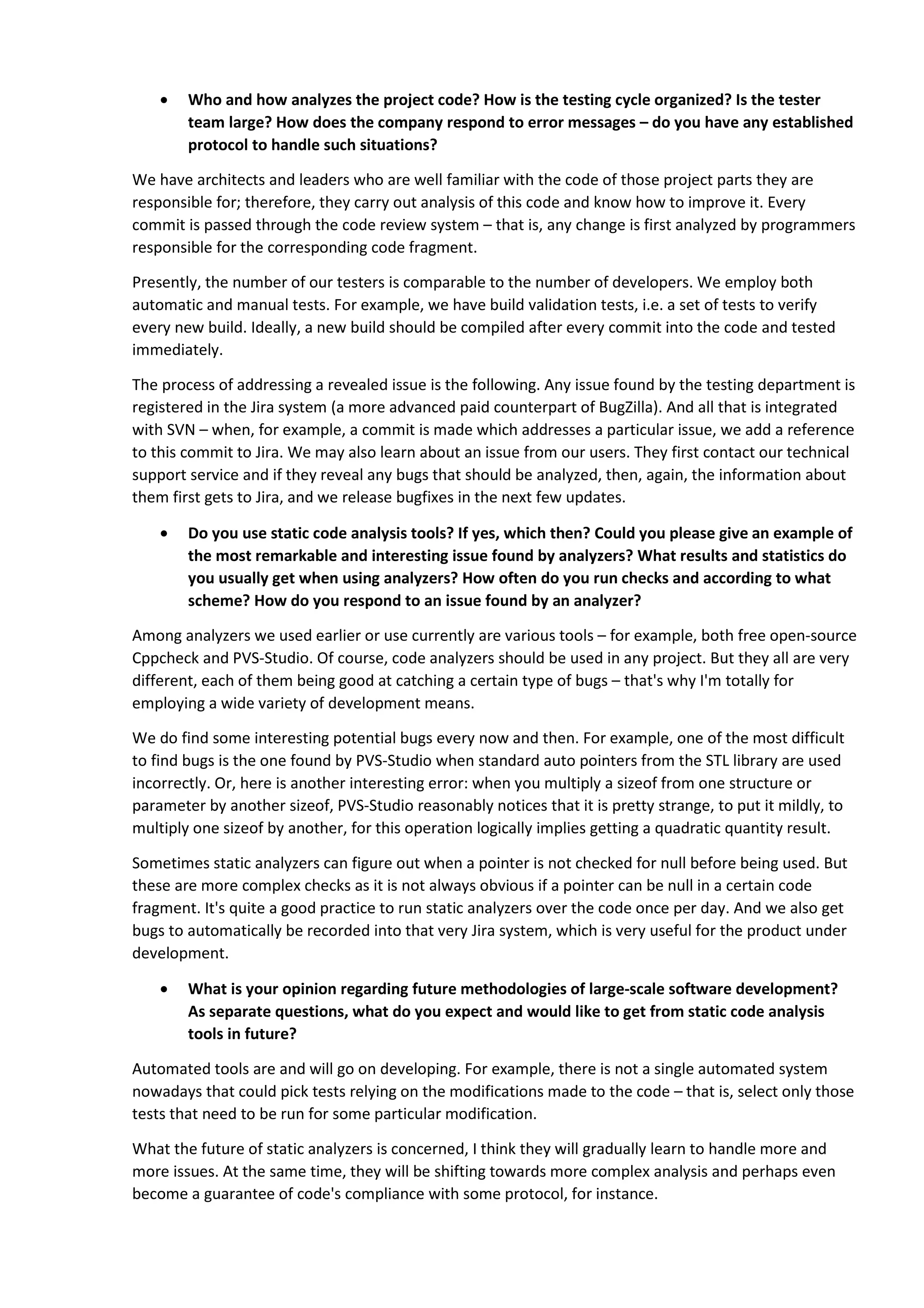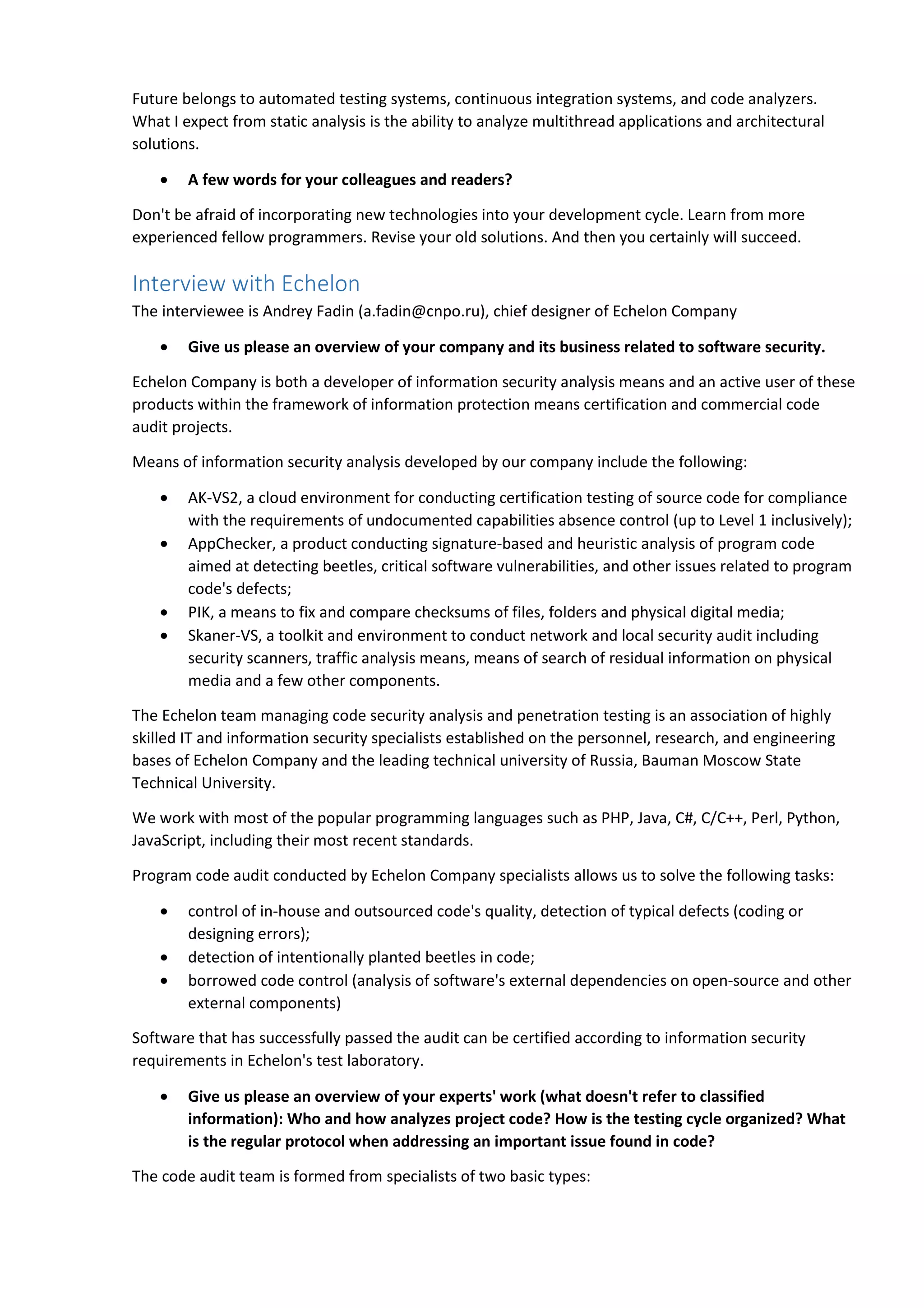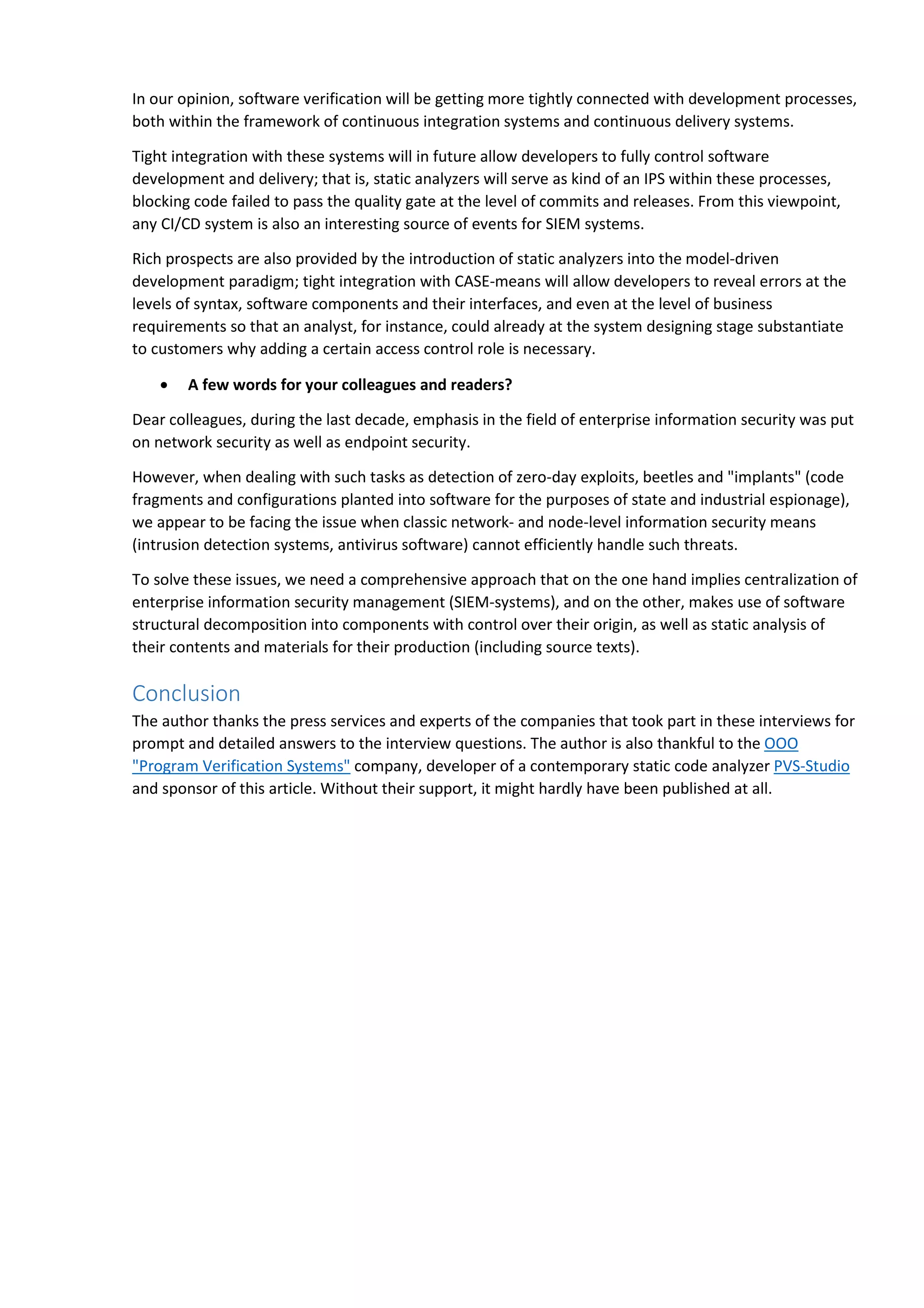The document features three interviews with representatives from Acronis, Alternativaplatform, and Echelon Company, focusing on their use of static code analyzers and software development methodologies. Acronis discusses their extensive use of static analyzers and structured testing processes, while Alternativaplatform expresses limited use of such tools, favoring manual testing. Echelon emphasizes the importance of integrating security analysis within development processes and the role of static analyzers in enhancing software security.





